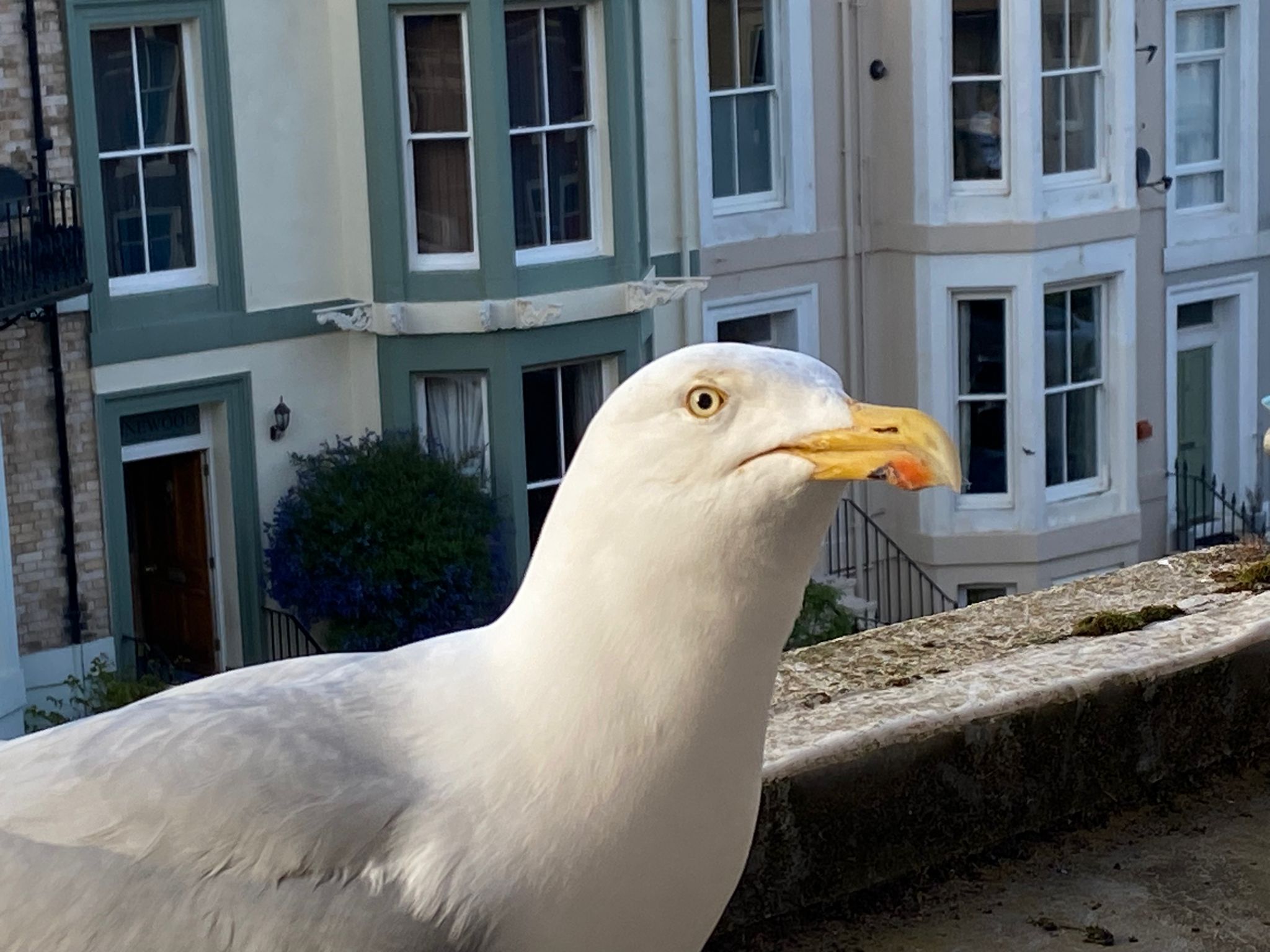Why is the owl flying across the Atlantic?
Why would the owls be migrating East/ West? So e they just go north/ south?
Power is not a measure of work.
Tell that to my boss
Prager u science books for the Shitler youth be like…
Biggest owl weighs up to 10 lbs. (Blakiston’s Fish Owl)
300kW has dimension J/s and calorie has dimension J. It’s like saying that you would walk 5km/h equivalent of over 200m.
I will not entertain the notion that they were sloppy with what units they used.
But they recharge on power lines, that’s just science.
They do not … owls are solar powered, that’s why they are nocturnal… DUH.
An owl emitting 300 kilowatts of power would explode in a ball of flame that would light up the neighbourhood. I’ve never seen this happen, so I do have doubts about the numbers given here.
That just means migration is a lie because otherwise you would see explosions
*owlplosions it was right there yet you missed it :(
They only do this as a last resort escape technique
Owls don’t weigh 16 pounds (except for fat owls). 300 kilowatts is a rate of energy, not a total quantity of energy. 300 kilowatt hours (which is possibly what they meant?) Is only around 260,000 kilocalories (which is called “calories” on food labels because units of measure were made up by humans). According to an extremely naive google search, that would only take an owl 5 years to consume, rather than 10. If the original number were correct, that would mean this owl eats 8,000 calories per day. Which is not typical.
Onto the broader point, the efficiency of birds in flight is not as simple as this image suggests. There is no (useful) formula that takes the weight of a bird and the distance it will fly and tells you how many calories that takes. Birds can fly at different elevations, at different speeds. They can fly with or against the wind. They can change many things about how they fly to be more efficient or less efficient.
If you really want to know how many calories it takes for an owl to cross the ocean, first get the owl to the point of starvation, then bring it on a boat to the middle of the ocean. Feed it a fixed number of Tootsie pops, then sink the boat. With nowhere else to land, the owl will be forced to fly to shore. Based on how far the owl makes it, you can determine how far each tootsie pop allowed it to fly, and derive calories per mile from that.
PLEASE DON’T starve the owl! There is another way: metabolism rate is proportional to the number of O₂ + hydrocarbons → CO₂ + H₂O reactions in the body, which can be measured as the amount of CO₂ created during respiration. For humans, the CO₂ concentration in exhaled air is close to constant, so by inhaling through the nose and exhaling through the mouth into a bag (and not consciously hyper- or hypoventilating), one can get a very good measurement of one’s metabolism rate in different scenarios (and the lag is seconds, not hours for nutrition!). This is obviously way more difficult to do with a flying owl (even in a wind tunnel) but perhaps a surgically inserted airflow meter could work, or a closed-loop wind tunnel with very precise measurement of O₂/CO₂ levels. Yes, a flying owl has CO₂ emissions, and so does a running human, but way less than a combustion engine.
Another idea is to measure the carbon and water emitted as weight loss (yes, you lose weight by breathing) but there are other factors that could skew the results such as sweat evaporation, skin shedding etc.
There are flying rates for owls, like the barn owl is 80 km/h. Flying from NA to Europe wouldn’t even take more than 100 hours (60 from Boston to Lisbon), so with that it would mean the bird would be spending 3kW of energy, which is just nonsensical.
All birds have a kJ/d amount, and even with a huge multiplier you wouldn’t come anywhere near the amount in the meme.
Who are thee, who is so wise in the ways of science?
Just to add to your comment: calories in itself were a pretty good measurement for metabolic energy, because it is the energy needed to heat 1 gram of water by 1 °C, so something easily measurable to people at the time (roughly 100 years ago). The Joule was already proposed, but is less intuitive.
No one ever looks at the community before replying anymore, huh?
It’s hard to not answer, even if you know it.

Did we read the same comment?
I don’t read comments I have to scroll 2 pages for, especially in the shitposting community.
nO, NO, I remember this from physics. Energy is only used to move things up and down. Side to side doesn’t count. So as long as the owl stays at the same height on the tree it launched from, it can go as far as it needs to.
Assuming a spherical owl…
… On the ground. Flying spheres still require energy
NASA are so dumb for sending their satellites all the way into space. Why don’t they simply float them above the trees as the wise and majestic owl teaches us?
They would hit the mountains at that height, and the FAA requires them to be up above airplane traffic anyways. After that, it gets crowded right above the launch pads, and sometimes there’s shooting stars and stuff, so some satellites are forced to go even higher.
Wait, which mountains are between the us and Europe again?
It’s either over the mountains, or your owl will have to thread the needle between the Azores and Greenland.
I’ll take a stab at it.
There are no known owl species that naturally grow up to 16 pounds. The rest of the numbers are just as meaningless.
If you wanted to check what it would take for a random owl species to migrate across the ocean from europe to north america, that’s something we can kind of check.
After a bit of lookup, it seems that the burrowing owl needs about 50-75 calories a day at rest to live, flight multiplies those calories by a factor of roughly 9.2 times. (I’mma round up to 10 because fuck it.) So 500-750 a day of pure flight at a speed of somewhere between 2 and 33 mph. I’m going to settle at 20 because I like easy numbers and I feel like it’s not too crazy fast. So 20 miles per hour across 24 hours gets us a distance of 480 miles. Iceland and Scotland are 500 miles away. Assuming any of these assumptions are at all fair, it seems like an owl hellbent on crossing the ocean could manage to do it with laser guidance in less than two days without access to ground based food.
Yeah 16 pounds is a large cat like a Maine Coon cat or a small corgi / beagle. There are flighted birds that big but they’re not common.
So 20 miles per hour across 24 hours gets us a distance of 480 miles.
Going from Europe to the Americas by way of Scotland and Iceland is going to be a bit of a problem for that bird, as it can expect pretty consistent 10-20kt headwinds for the entire journey. America to Europe by that route is a comparatively easy trip.
I doubt that owls are capable of effective dynamic soaring, but that would drastically reduce the energy requirements.
Owls are librulz, they only want to escape the us, not return
All these people in the comments be acting like owls are real when you can easily see how fake the are when you buy them in Home Depot’s gardening department.
And it’s not even carrying a coconut
In Europe? The coconut’s tropical!
It could grab it by the husk!
Most of them are stealthy enough to stowl away on a boat though.
Owls expel pellets. E = mc^2. By expelling pellets made of matter, owls gain energy that they then use in migratory flight.
You can’t fact check something that doesn’t provide any of its work. Where did they get those numbers from? What equations did they use, and do they actually apply to this situation? Is the owl flying through a vacuum, through air, through honey? In reality, it would be flying through air, but we have no idea what the equation says it’s flying through, or even if it is flying. Maybe the equation is for cars traveling on a road.
Since it’s non-falsifiable, you can just disregard it. Claims require evidence, not assertions.
The problem is not just that the numbers are made up, they are in the wrong units. Watts is not a unit of energy.
It’s like saying; a cow wants to eat an apple. Each apple weighs five liters. Therefore the cow would need a mouth 2 kg across. It would take the cow seven metres to eat the apple.
For starters, the average owl doesn’t weigh 16 pounds, that’s immediately proven false with a simple Google search. The smallest is an ounce, the largest just over 9 pounds.
On top of that, I can’t find any species that migrates from Europe to America…
So false from the jump.
There’s a few hundred that migrate from eastern NA to Europe and Africa, but no owls. Owls don’t really migrate at all. I did all the calculations in a different comment in this thread and the shitpost is so off it’s incredibly easy to disprove.
https://outdoors.stackexchange.com/a/15688 https://datazone.birdlife.org/flyway/factsheet/east-atlantic
Yeah, I should have specified, any species of owl that migrates from Europe to America… Not sure what that image is on about. Everything seems wrong.
It is falsifiable, just from a basic bird standpoint. Energy usage and flight speed is listed on allaboutbirds.org and you can calculate the rest just from knowing how birds work (for one, owls don’t really migrate at all, though there are of course exceptions with everything in bird world).
But you don’t know if the equation they used was for if the owl is swimming through the deep ocean. That would take a lot of calories.













